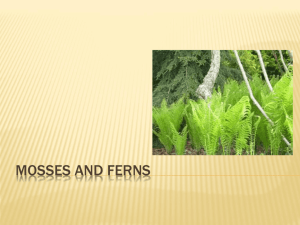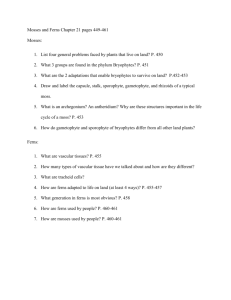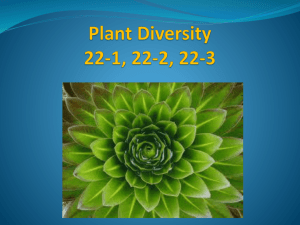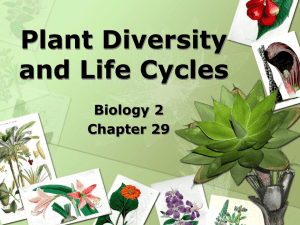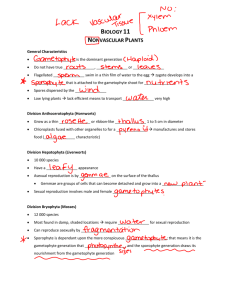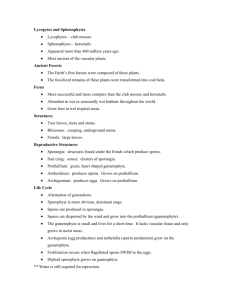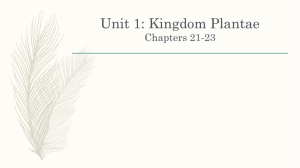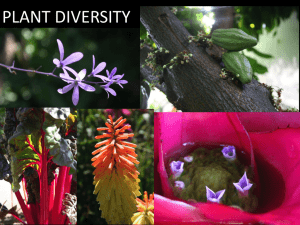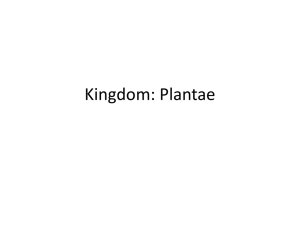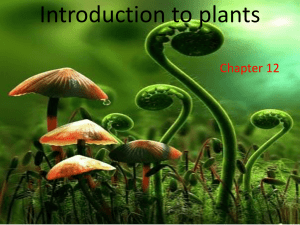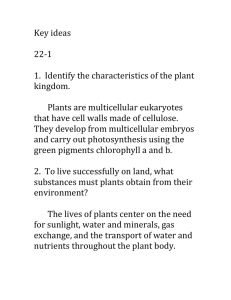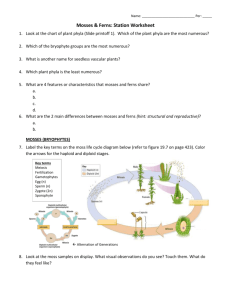Plant Diversity
advertisement
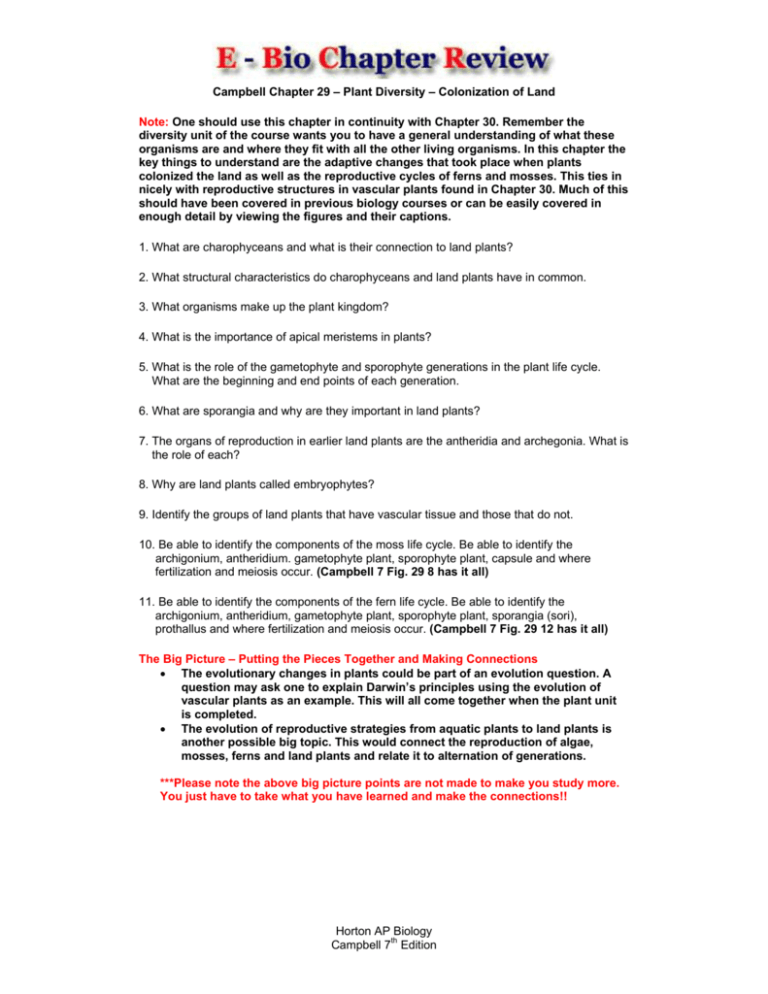
Campbell Chapter 29 – Plant Diversity – Colonization of Land Note: One should use this chapter in continuity with Chapter 30. Remember the diversity unit of the course wants you to have a general understanding of what these organisms are and where they fit with all the other living organisms. In this chapter the key things to understand are the adaptive changes that took place when plants colonized the land as well as the reproductive cycles of ferns and mosses. This ties in nicely with reproductive structures in vascular plants found in Chapter 30. Much of this should have been covered in previous biology courses or can be easily covered in enough detail by viewing the figures and their captions. 1. What are charophyceans and what is their connection to land plants? 2. What structural characteristics do charophyceans and land plants have in common. 3. What organisms make up the plant kingdom? 4. What is the importance of apical meristems in plants? 5. What is the role of the gametophyte and sporophyte generations in the plant life cycle. What are the beginning and end points of each generation. 6. What are sporangia and why are they important in land plants? 7. The organs of reproduction in earlier land plants are the antheridia and archegonia. What is the role of each? 8. Why are land plants called embryophytes? 9. Identify the groups of land plants that have vascular tissue and those that do not. 10. Be able to identify the components of the moss life cycle. Be able to identify the archigonium, antheridium. gametophyte plant, sporophyte plant, capsule and where fertilization and meiosis occur. (Campbell 7 Fig. 29 8 has it all) 11. Be able to identify the components of the fern life cycle. Be able to identify the archigonium, antheridium, gametophyte plant, sporophyte plant, sporangia (sori), prothallus and where fertilization and meiosis occur. (Campbell 7 Fig. 29 12 has it all) The Big Picture – Putting the Pieces Together and Making Connections • The evolutionary changes in plants could be part of an evolution question. A question may ask one to explain Darwin’s principles using the evolution of vascular plants as an example. This will all come together when the plant unit is completed. • The evolution of reproductive strategies from aquatic plants to land plants is another possible big topic. This would connect the reproduction of algae, mosses, ferns and land plants and relate it to alternation of generations. ***Please note the above big picture points are not made to make you study more. You just have to take what you have learned and make the connections!! Horton AP Biology Campbell 7th Edition
